

Front row, from left: Yew, Dr Lau, Alex Chan, Dr Lai, Dr Ooi, Dr Mah and Dr Yeong with other speakers and participants
The Symposium on Membrane Technology and Applications was organised by UTAR Centre for Photonics and Advanced Materials Research and Universiti Teknologi Malaysia (UTM) on 4 October 2018 at Sungai Long Campus. The symposium aimed to promote research collaborations between UTAR and other local higher learning institutions as well as industries in the context of advanced materials for membrane synthesis and its applications. It also aimed to understand the current status and challenges, and the future demands of membrane technologies by the local industries besides raising students’ interest in membrane research.
Present at the event were UTAR Division of Community and International Networking Director Assoc Prof Dr Lai Soon Onn, Lee Kong Chian Faculty of Engineering and Science (LKC FES) Head of Department of Chemical Engineering Dr Mah Shee Keat, LKC FES Department of Chemical Engineering Dr Thiam Hui San, Dr Ng Law Yong, Dr Chong Woon Chan, Ir Chong Kok Chung , Ir Teoh Hui Chieh , Dr Pang Yean Ling, LKC FES Department of Mechanical and Material Engineering Dr Rubina Bahar, Lee Sze Shin, Centre for Foundation Studies Department of Science and Engineering Heng Sze Lu, Centre for Photonics and Advanced Materials Research Chairperson Ts Dr Pua Chang Hong, KenEp Resources (Asia) Sdn Bhd Project Engineer Loke Dixon, Malaysian Nuclear Agency Kumpulan Sinaran Modifikasi Polimer Dr Ting Teo Ming , lecturers and students from various universities.

Dr Pua welcoming all the speakers and participants
Dr Pua welcomed all the speakers and participants and said, “Food and water have become one of the very important issues nowadays. Our population has kept growing and has reached about 7.7 billion and is expected to have shortages of food and water in the next 30 years. So, we organised this symposium to discuss the membrane for water treatment and also for the food industry. We are not expecting to save the world with this symposium but with the concerted effort of all parties, we can help to delay the timing of the crisis.”
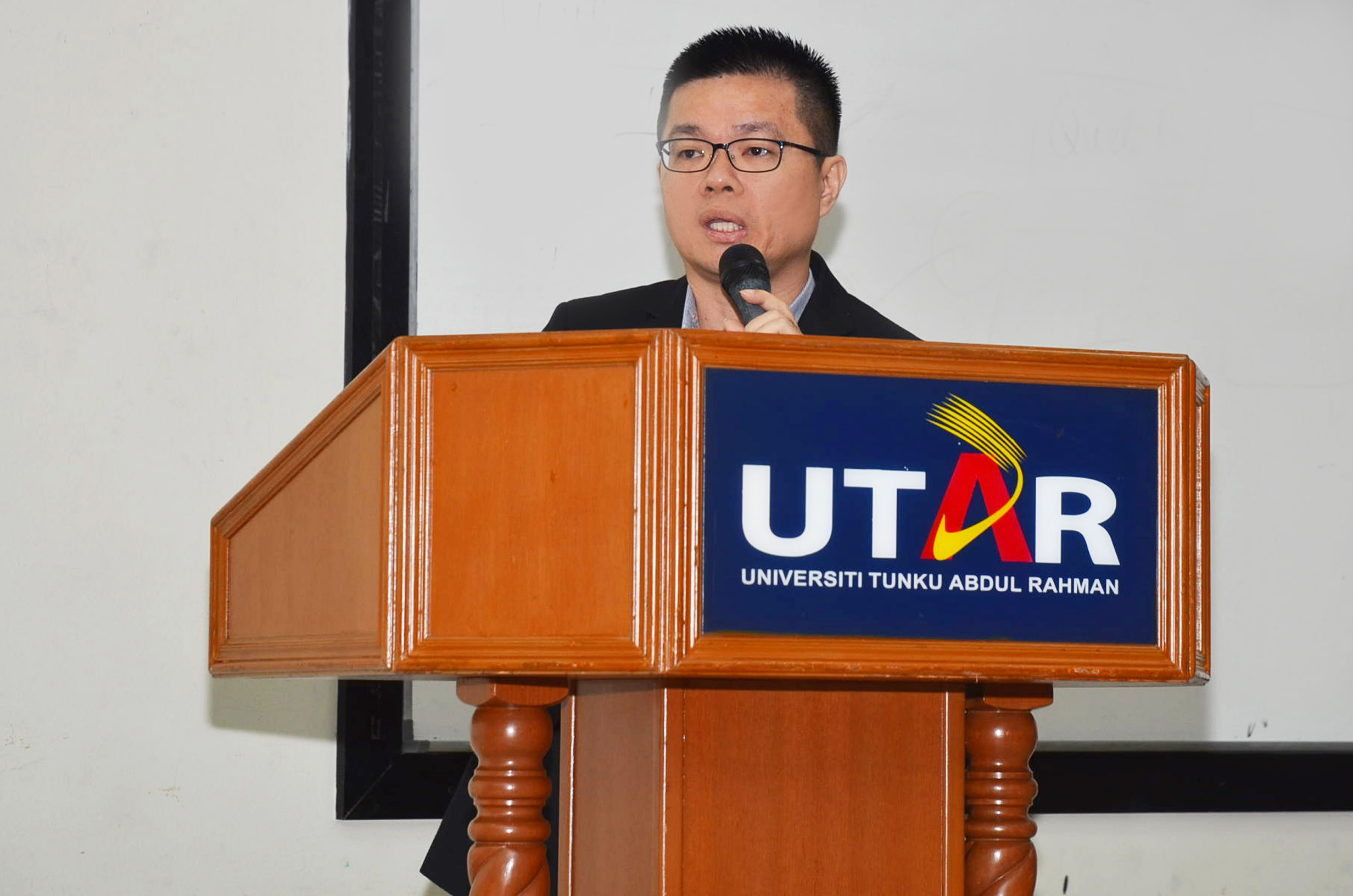
Dr Lai introducing UTAR’s Membrane Research Group
Before the symposium started, Dr Lai briefly introduced UTAR’s Membrane Research Group and its research areas. “UTAR’s Membrane Research Group is involved in water and wastewater treatment, gas separation and also membrane fabrication. Due to the lack of space and facilities, we are using Computational Fluid Dynamics (CFD) as a tool to run some simulation on the fluid flow patent. This could provide us a good way to move forward,” said Dr Lai.
The symposium was then followed by eight talks, conducted over four sessions. Each presenter was given 40 minutes to present which included the Q&A session.
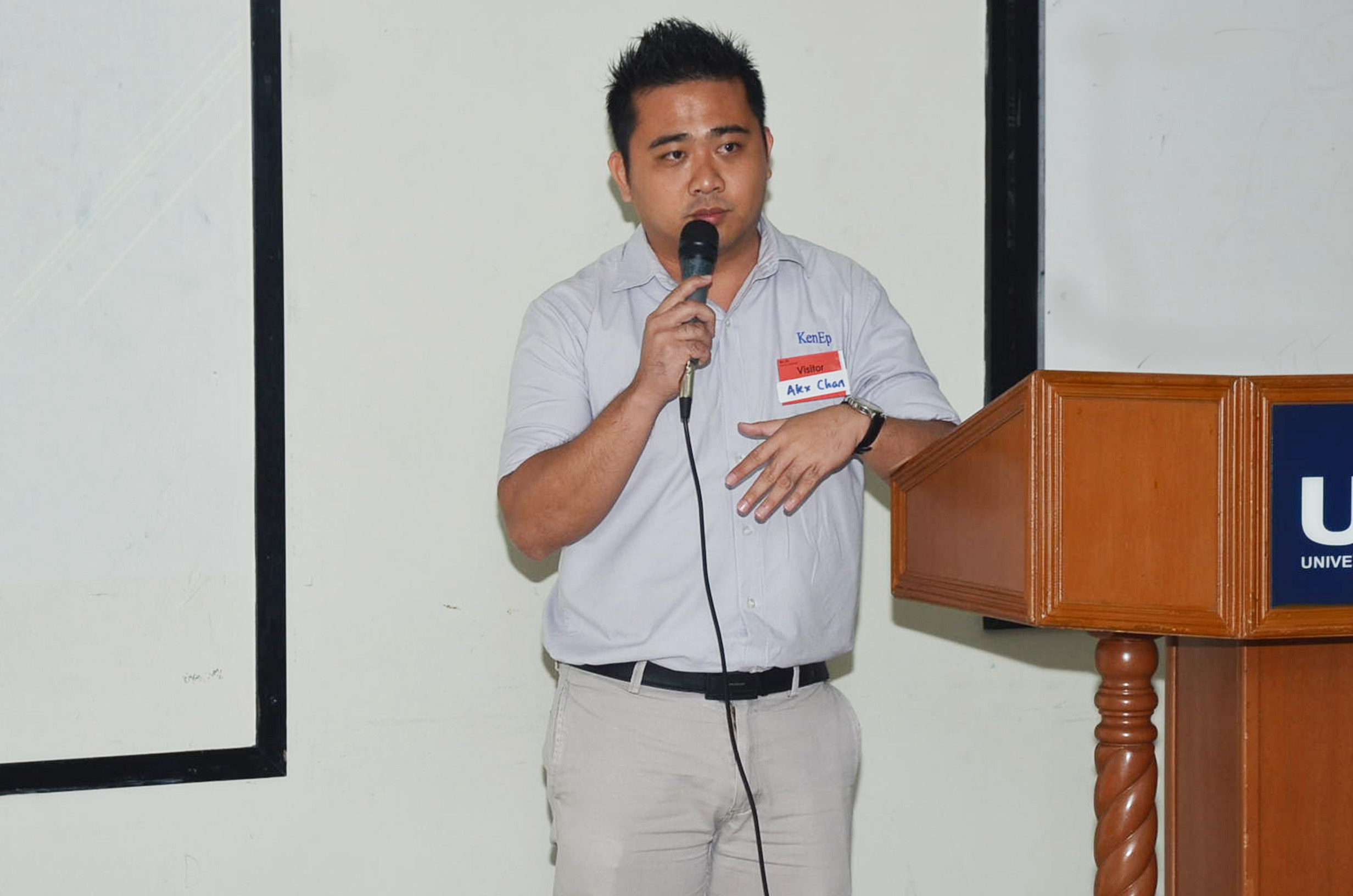
Alex Chan presenting “Industrial Applications of Reverse Osmosis (RO) Membrane”
Session one saw KenEp Resources (Asia) Sdn Bhd Service Manager Alex Chan Kok Wah presenting on “Industrial Applications of Reverse Osmosis (RO) Membrane”. He concluded “RO is made up of plastic. If RO comes into contact with chlorine, RO’s performance will be affected because chlorine will attack the polyamide group and destroy their stable linkage and confirmation structure. This is why we need to do RO cleaning after a few months, using citric acid.”
The symposium then proceeded with the group photo session before the first session ended.
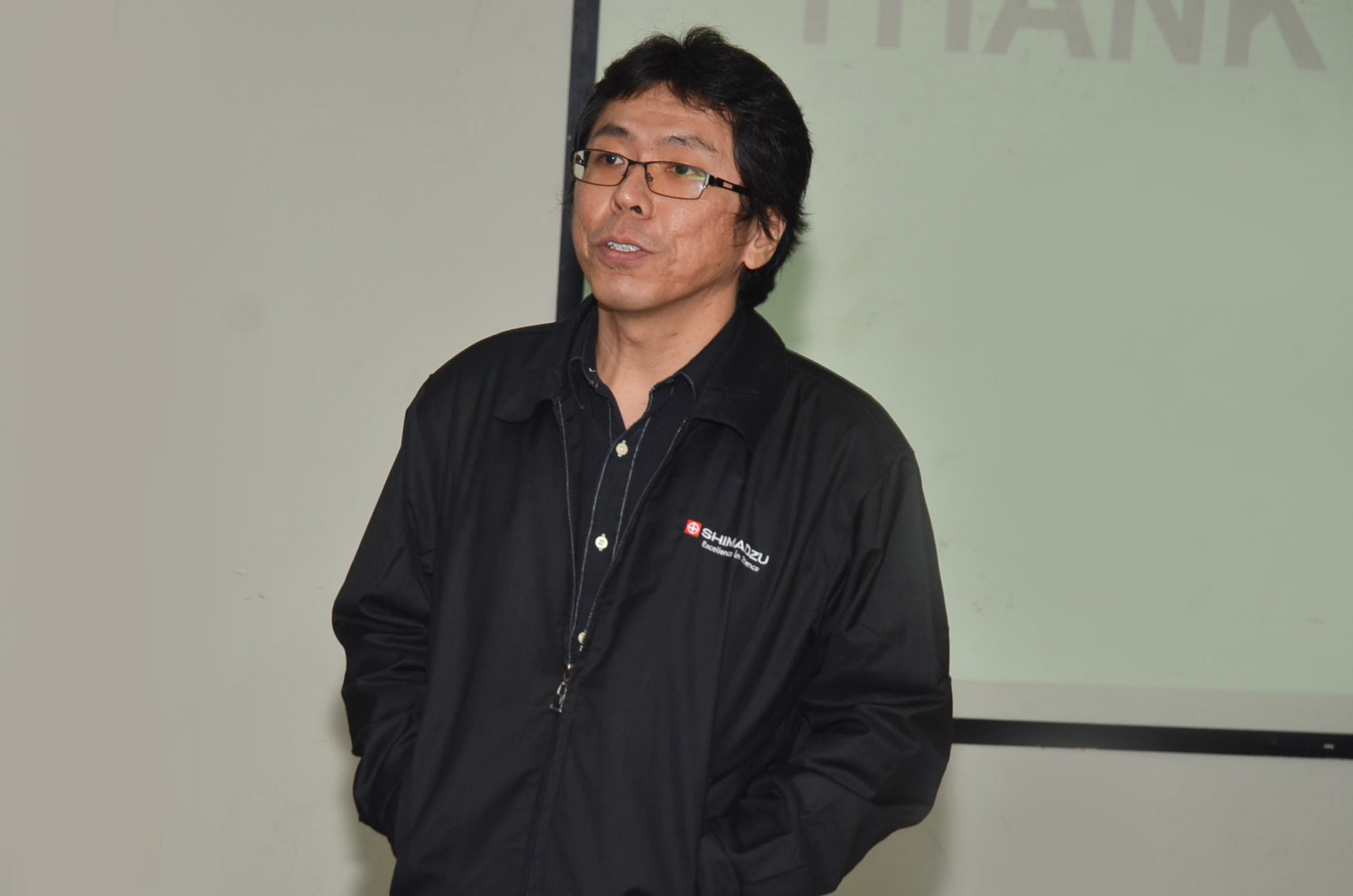
Yew delivering his talk on “Water Quality Determination by Total Organic Carbon (TOC) Approach”
Speaking at session two was Shimadzu Malaysia Sdn Bhd Senior Application Chemist Yew Wooi Meng with his presentation titled “Water Quality Determination by Total Organic Carbon (TOC) Approach”. “TOC is a method used to detect water pollution. The water can be drinking water, sea water or any kind of water. If your sample of water contains a high level of TOC, it means the water is very dirty. This is the new index for organic pollution in some countries, but not in Malaysia. TOC can determine the amount of carbon directly and there is only a few sample matric that interferes with TOC analysis. Most importantly, it only requires five minutes to determine the TOC compared to Biological Oxygen Demand (BOD) and Chemical Oxygen Demand (COD),” said Dr Yew.
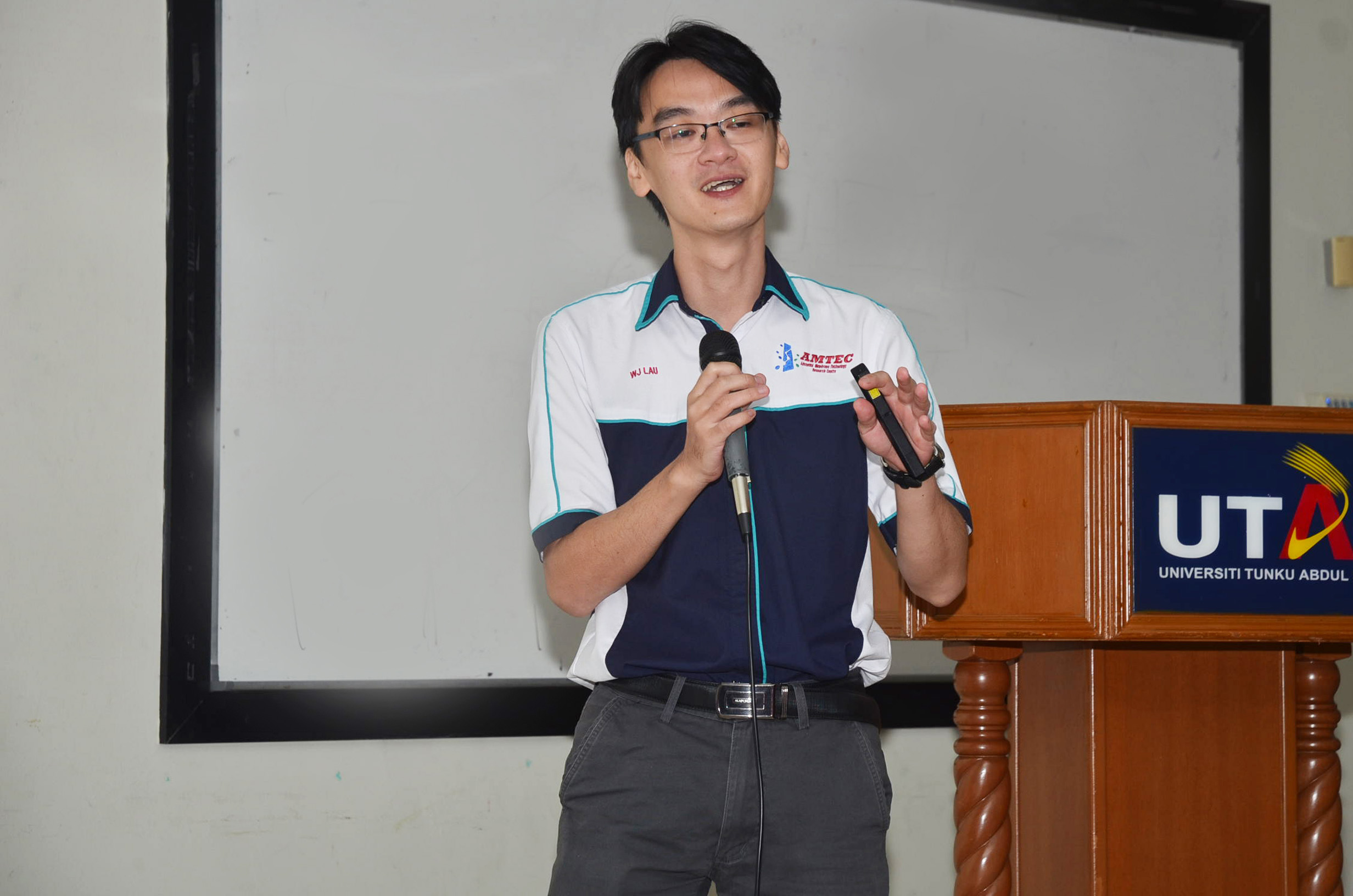
Dr Lau delivering his talk on “Thin Film Nanocomposite (TFN) Membranes for Water and Wastewater Process”
UTM School of Chemical & Energy Engineering Advanced Membrane Technology Research Centre Assoc Prof Dr Lau Woei Jye delivered his presentation, titled “Thin Film Nanocomposite (TFN) Membranes for Water and Wastewater Process”. “Based on our seven years of experience, there are two different techniques to make the TFN membrane, which are Conventional IP technique and Vacuum Filtration IP technique. For conventional IP technique, you need to use a rubber roller to roll the surface. Also, make sure the nanomaterial is dispersed in the organic phase and not in the water phase. If you choose to use the Vacuum Filtration IP technique, you don’t need to modify the nanomaterial, because the nanomaterial can directly disperse in the water phase. However, there is a limitation in choosing the Vacuum Filtration IP technique. It is only suitable for certain materials, since the biggest vacuum size is only 50cm in diameters,” said Dr Lau.
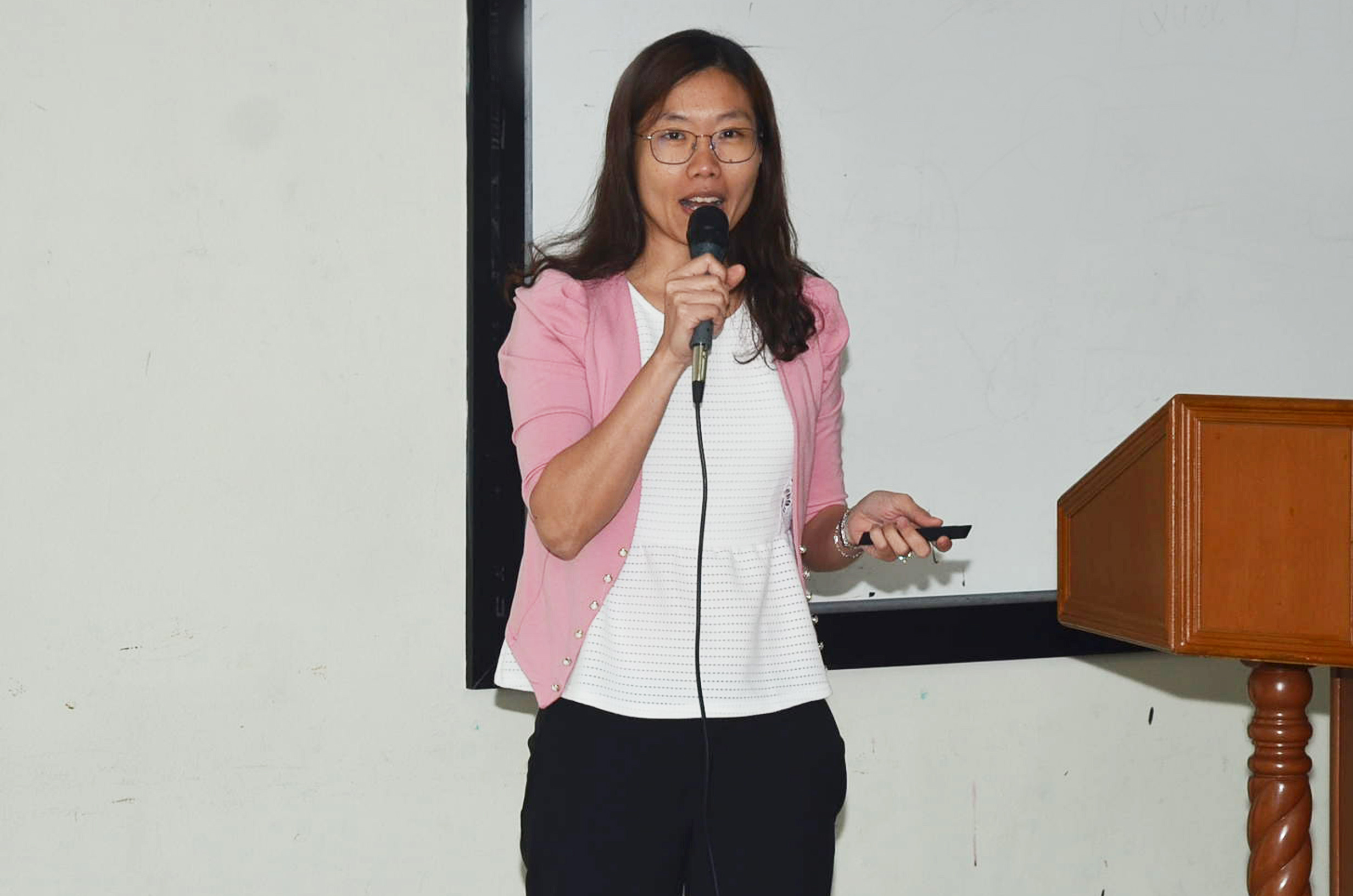
Dr Yeong delivering her talk on “Development of Composite Membranes Containing Innovative Couple of Zeolite and MOF/Polyimide for CO2 Separation from CH4”
The last presenter speaking at session two was Universiti Teknologi PETRONAS Department of Chemical Engineering Assoc Prof Dr Yeong Yin Fong with her presentation titled “Development of Composite Membranes Containing Innovative Couple of Zeolite and MOF/Polyimide for CO2 Separation from CH4”. “Our research team has been actively working on the development of membrane for CO2 removal from CH4. Removal of CO2 from CH4 has always been the core business of PETRONAS and all oil and gas industries. This is because the level of CO2 in K5 oil field in Malaysia is high up to 87%. In order to meet the pipeline specification and maintain the heating value of the natural gas, CO2 as a contaminant has to be removed from the CH4 natural gas. There are numbers of CO2 removal technology reported of being used in the industry including the adsorption and Cryogenic. This technology poses some advantages and disadvantages. Basically, the gases are separated based on the diameter itself or affinity of the gases towards the membrane materials,” said Dr Yeong.
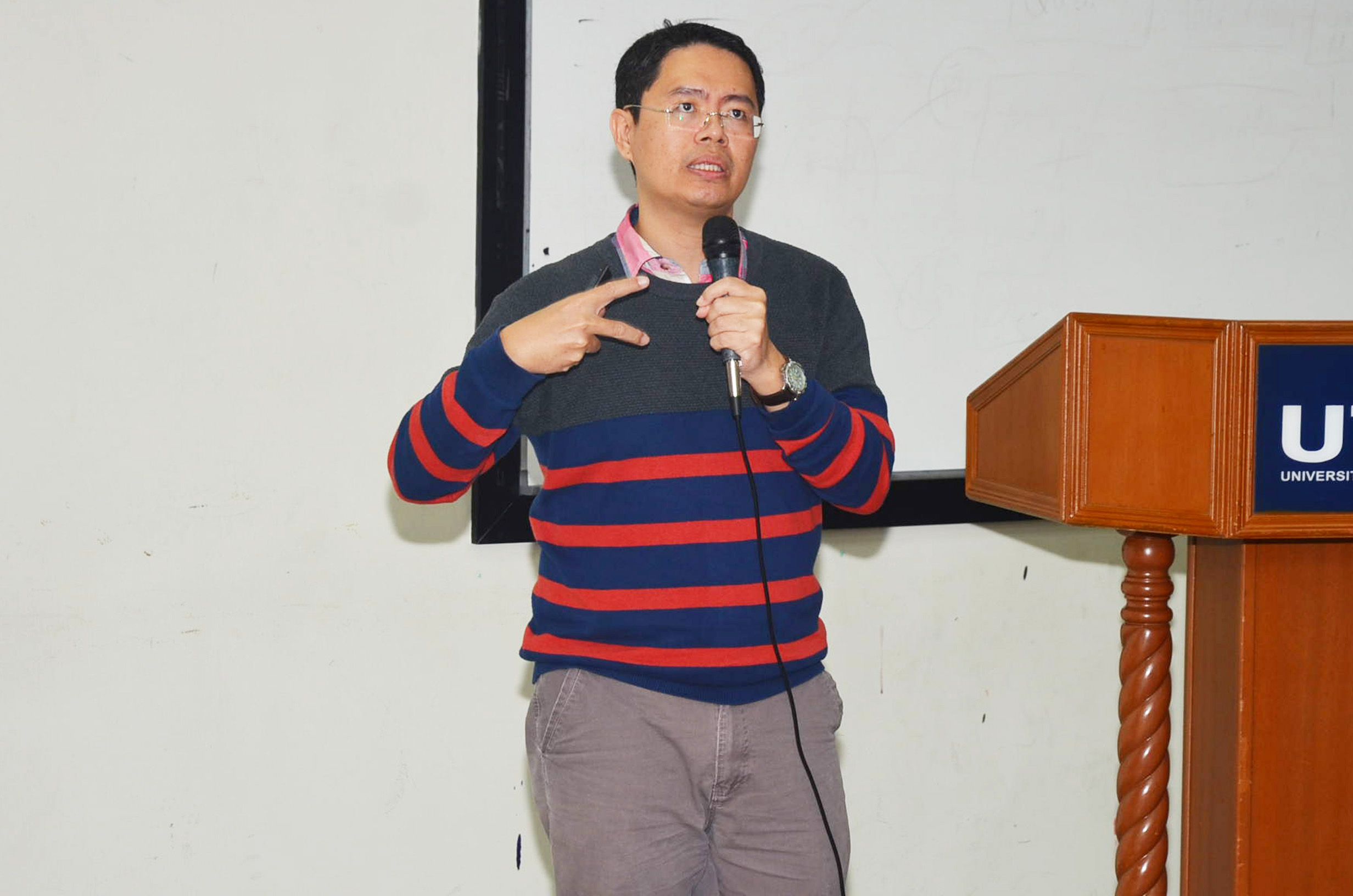
Dr Ooi delivering his talk on “Membrane Fouling from Colloidal Perspective”
Session three saw Universiti Sains Malaysia School of Chemical Engineering lecturer Assoc Prof Dr Ooi Boon Seng presenting on “Membrane Fouling from Colloidal Perspective”. “Membrane fouling is a dynamic phenomenon. Dynamic means it can actually change with time. The progressive development of the fouling layer is a function of operation time and it involves complex interactions such as foulant-membrane and foulant-foulant interactions. There are four types of membrane fouling which are colloidal fouling, organic fouling, scaling and biofouling. Hence, in order to prevent fouling, we build a dendritic structure which is macromolecule,” said Dr Ooi.
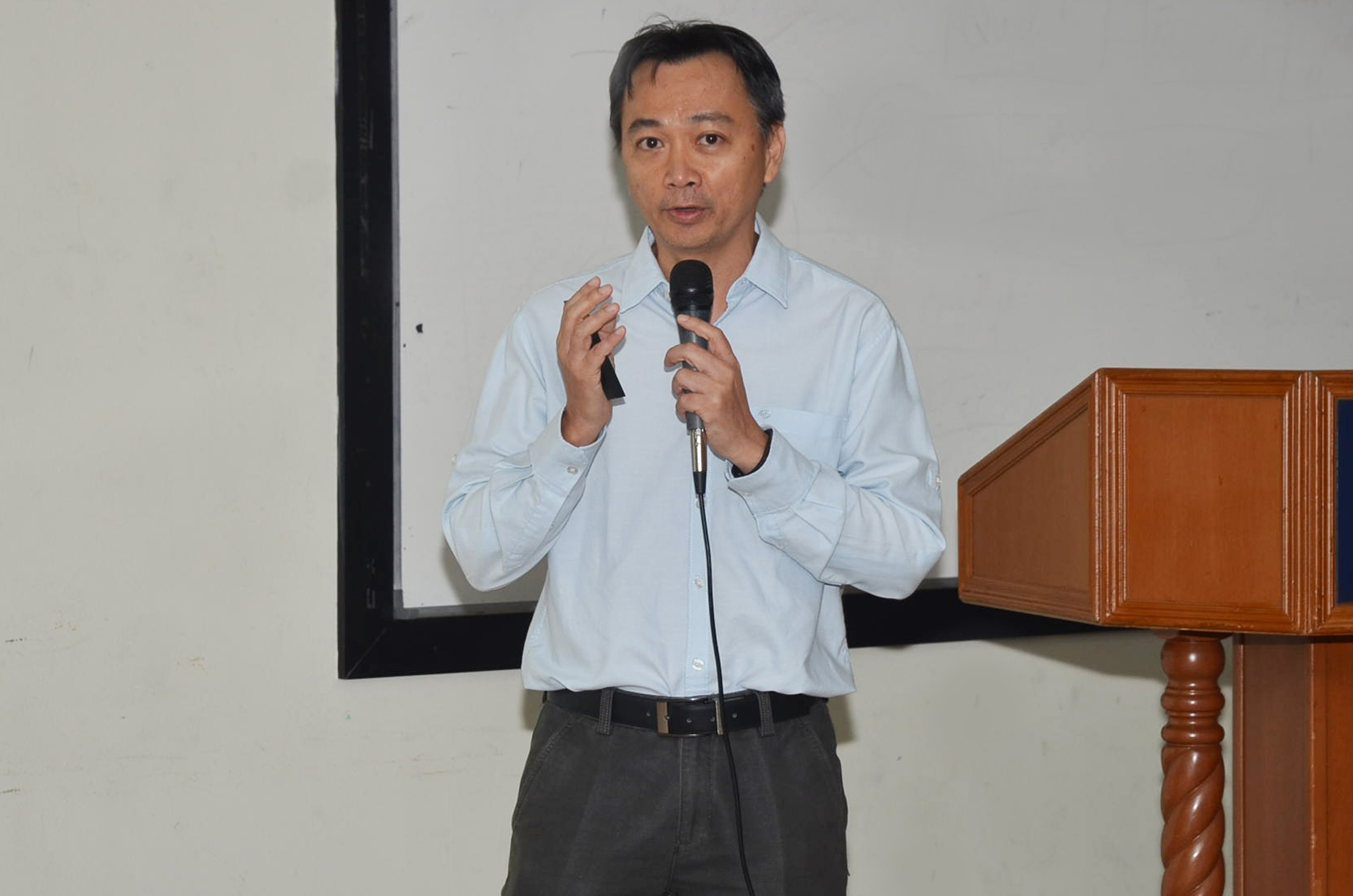
Chan delivering his talk on “Advanced Materials Characterisation using Gas Adsorption Technique: BET Surface Area and Porosity Measurement”
GAT Scientific Sdn Bhd Product Manager Chan Chiaw Mong presented his lecture titled “Advanced Materials Characterisation using Gas Adsorption Technique: BET Surface Area and Porosity Measurement”. “Gas adsorption can be referred to as physical adsorption. It is a phenomenon of low heat adsorptions. There is no occurrence of violent or disruptive structural change. Physical adsorption involves multiple layers of adsorbate, thus it allows for pore size measurement. As for its surface area, it is a low-temperature process. You have to slow down the gas molecule to get closer to your sample, so that you can retrieve some useful data from it. Adsorption equilibrium is achieved quickly in physical adsorption since no activation energy is generally required. It is fully reversible, allowing adsorbate to fully adsorb and desorb,” said Chan. He then continued, “There are three categories of Porosity which are Micropore, Mesopore and Macropore. We study Porosity because different surface area indicates materials differently and Porosity data can give further information on your process.”
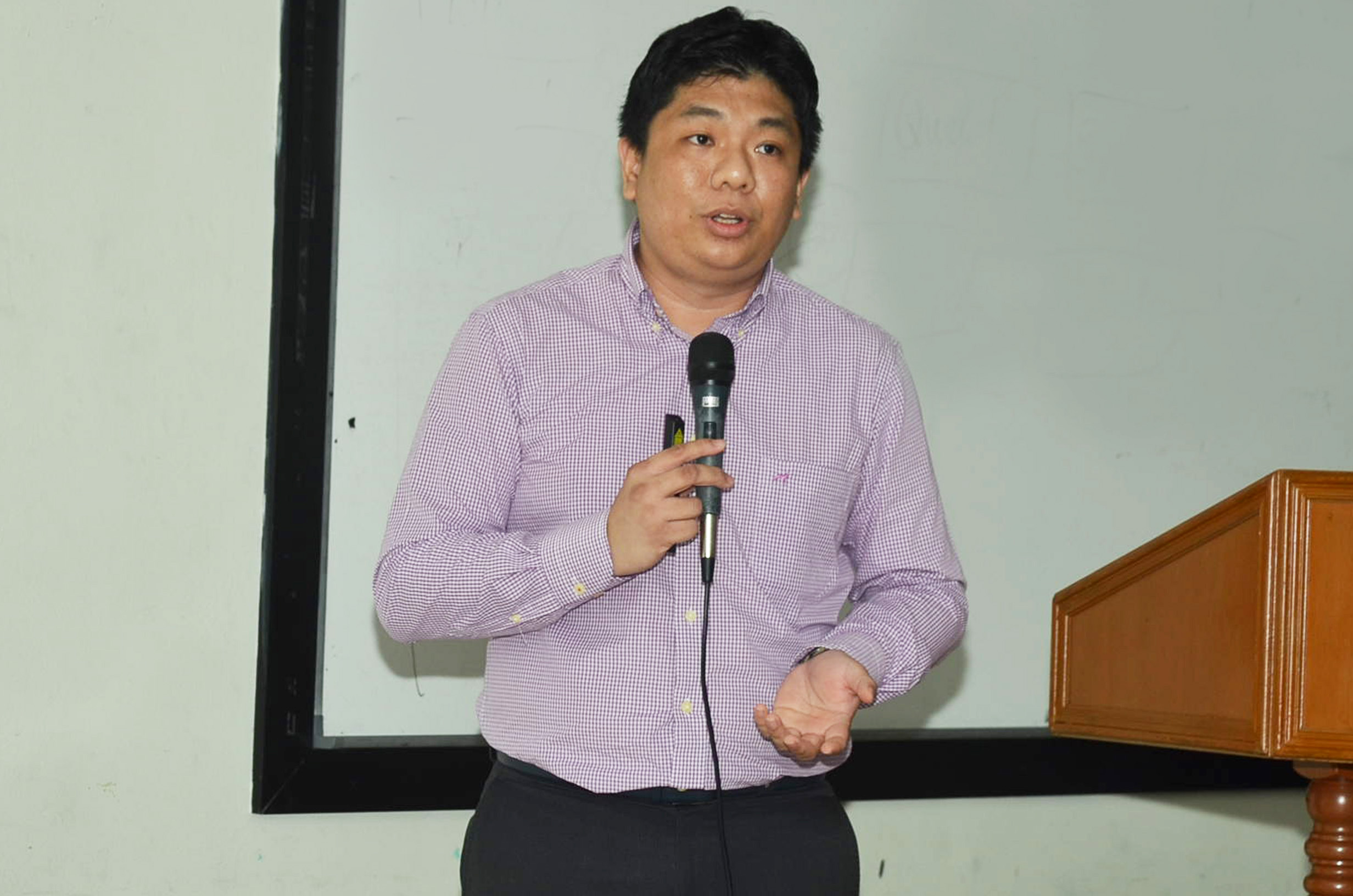
Ir Chong delivering his talk on “Improvement of Indoor Air Quality through Oxygen Enrichment & Carbon Dioxide Adsorption Using Membrane Processes”
Speaking at the last session were Ir Chong with his presentation titled “Improvement of Indoor Air Quality through Oxygen Enrichment & Carbon Dioxide Adsorption Using Membrane Processes”. “According to the Global Burden of Disease Study in the year 2010, the air pollution had caused 6.85 million deaths globally, and I believe the numbers of death is even higher today. Out of these 6.85 million deaths, 4.3 million was caused by indoor air pollution. This is because there is no fresh air or window in the room, so the air indoor keeps recirculating. That is the reason why some of the very essential facilities like hospital need to have HEPA filter to clean off the air and also Ultraviolet light to kill the germs. Air pollution is more threatening when you place yourself indoor. Hence, we have some strategy to maintain the indoor air quality as proposed by the United States Environmental Protection Agency. The first strategy is to control the source of pollution and the amount of emission. However, lot of effort is required to execute this strategy. So, we improved the ventilation by reducing the CO2 content. We can either introduce fresh air by trying to absorb it or introduce air cleaner to enhance O2 air inside the room,” said Ir Chong.

Dr Teow delivering her talk on “Membrane Technology in Action: Integrated Moving Bed Biofilm Reactor (MBBR)/ Membrane Pilot Plant for Palm Oil Mill Effluent Treatment”
Universiti Kebangsaan Malaysia Research Centre for Sustainable Process Technology (CESPRO) senior lecturer Dr Teow Yeit Haan delivered her lecture, titled “Membrane Technology in Action: Integrated Moving Bed Biofilm Reactor (MBBR)/ Membrane Pilot Plant for Palm Oil Mill Effluent Treatment”. “Palm Oil Mill Effluent (POME) has been the biggest environmental issue for the palm oil industry. Criticism about the palm oil production in Malaysia has been reported worldwide. This is why it required an urgent solution to solve the air pollution of our largest industry in Malaysia, the POME treatment. We received some funding from Sime Darby and we have also collaborated with some universities and international universities like Taiwan, Thailand and others for us to successfully conduct a zero waste palm oil mill processing project. Our mission about this project is to turn the palm oil mills into green factories targeting for carbon neutral with no pollution to the air, no pollution to the ground and no pollution to the water. With the success of the project, we believe that it can increase the revenue of the palm oil mill and, at the same time, it can ensure the long-term productivity and sustainability of the palm oil industry,” said Dr Teow.
The symposium then ended with all the participants and speakers receiving a certificate as a token of appreciation.
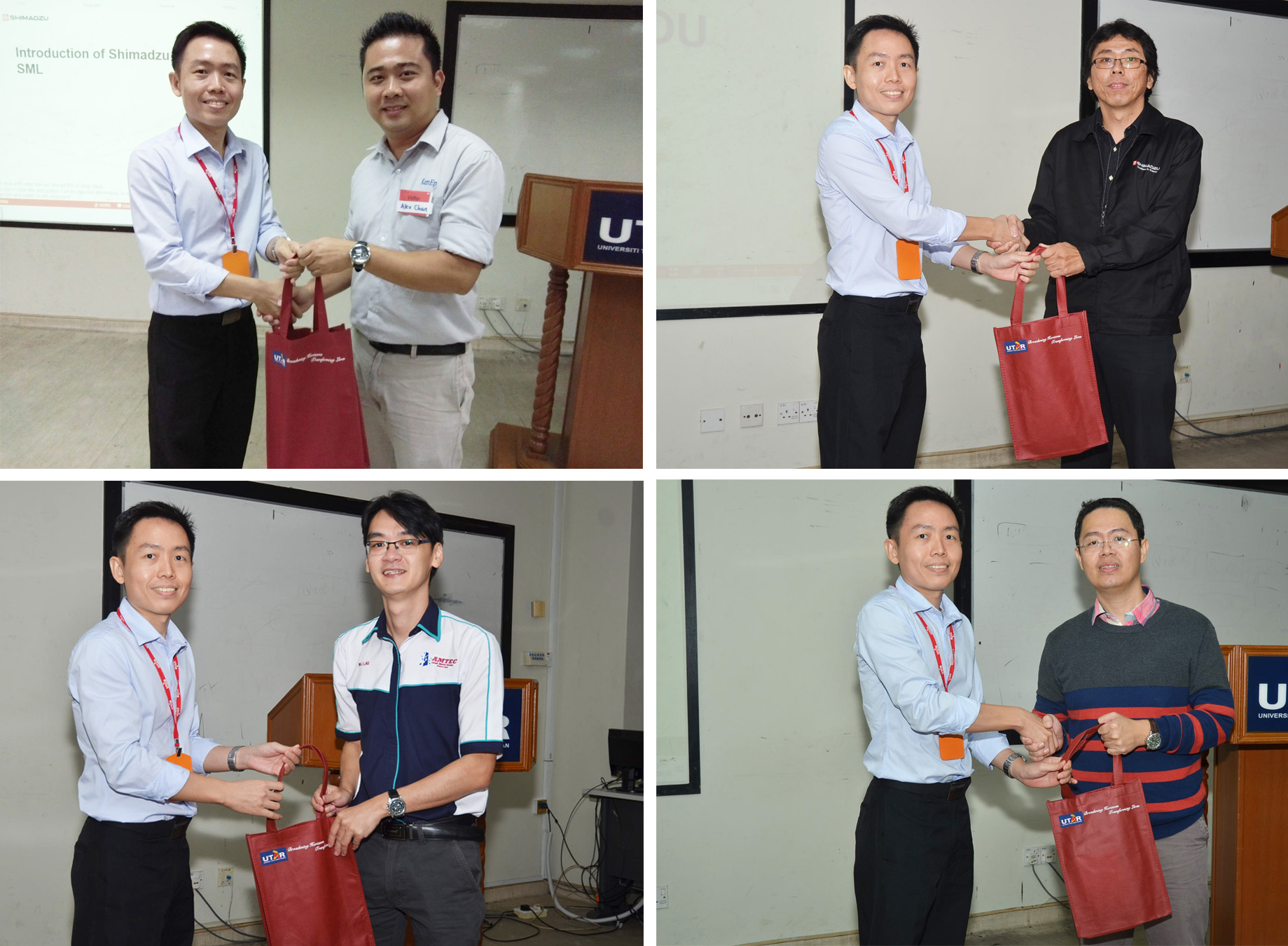
Dr Ng (left) presenting the token of appreciation to the speakers
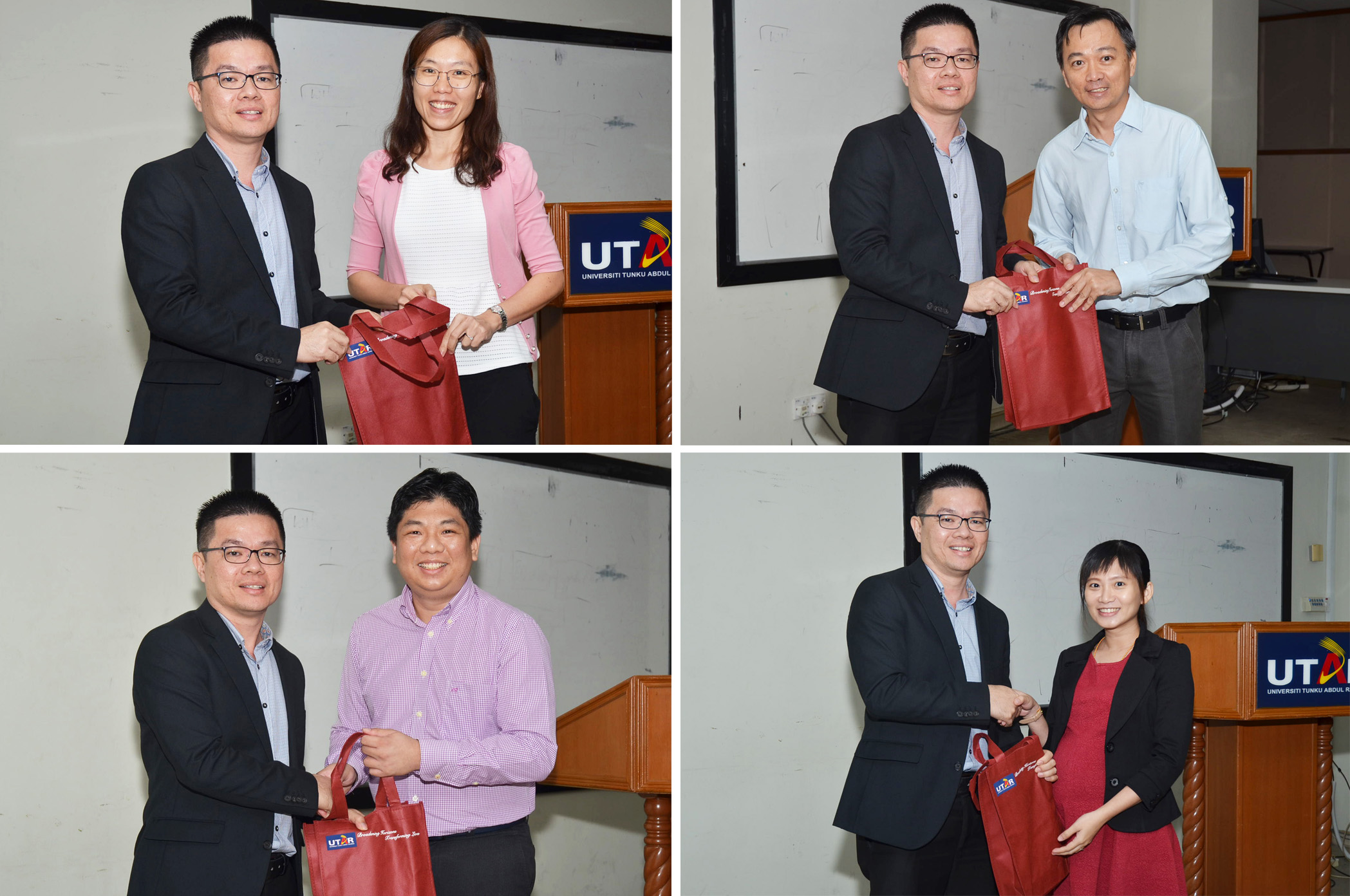
Dr Lai (left) presenting the token of appreciation to the speakers

Participants listening attentively to the speakers

Some of the audience during the Q&A sessions
© 2019 UNIVERSITI TUNKU ABDUL RAHMAN DU012(A).
Wholly owned by UTAR Education Foundation Co. No. 578227-M LEGAL STATEMENT TERM OF USAGE PRIVACY NOTICE